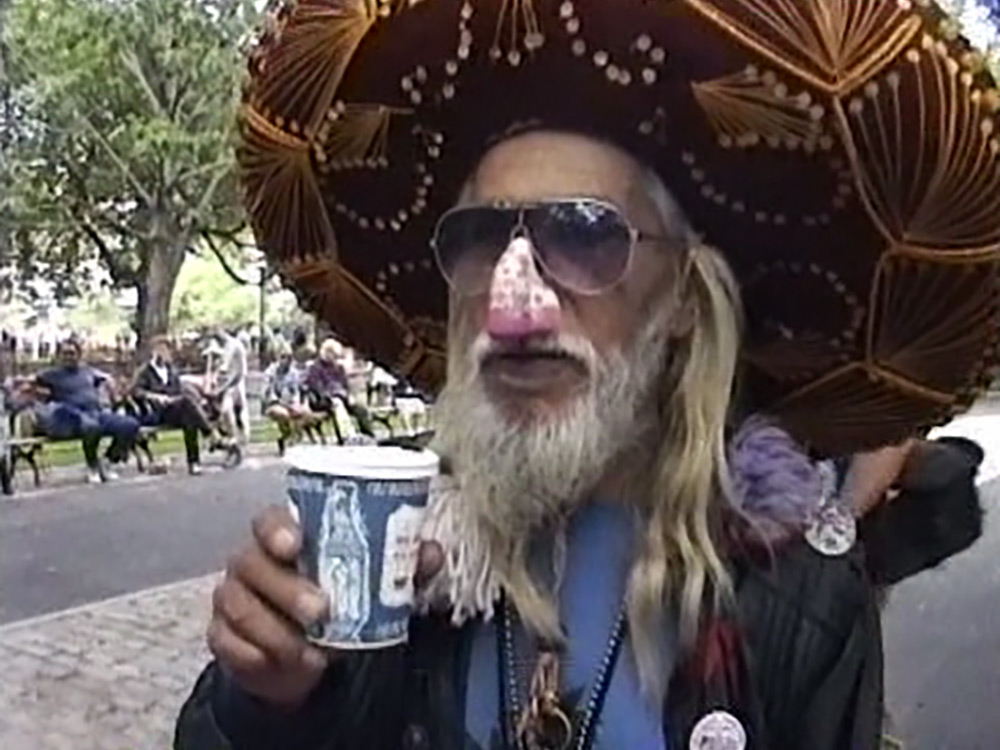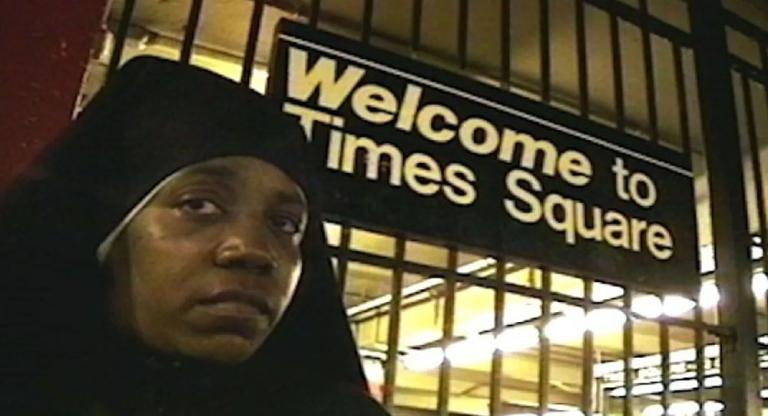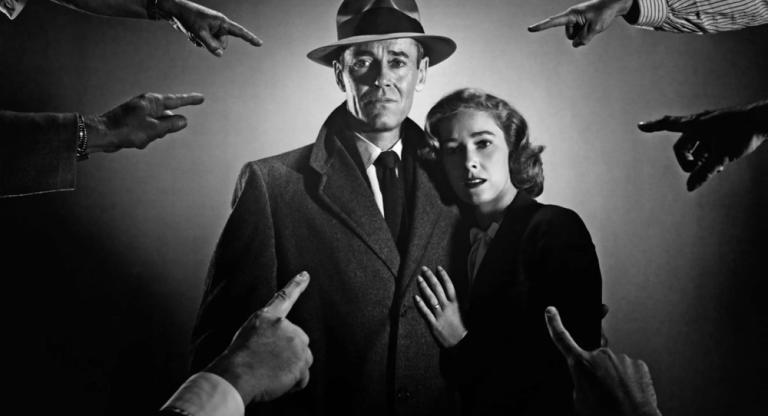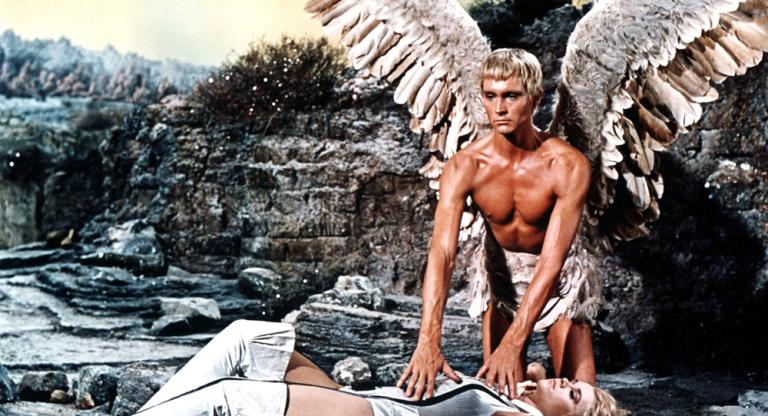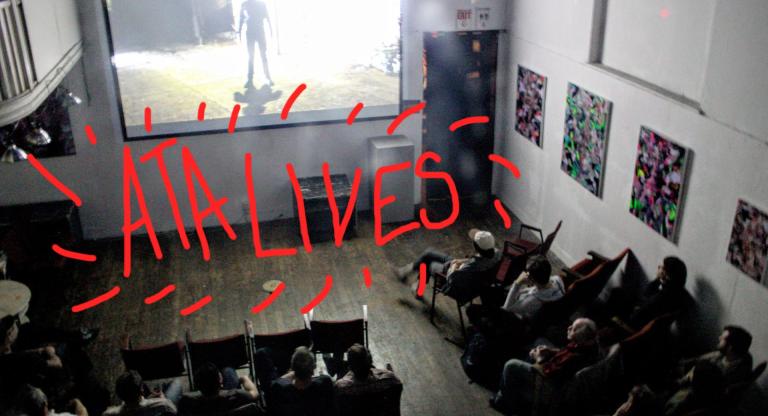Between Brave New York (2004) and Subway to the Former East Village (2007), Richard Sandler captures 12 years of Downtown New York history. An acclaimed street photographer, Sandler often focuses his lens on the unsuspecting denizens that populate the Big Apple. In his photography, commuters are captured in packed subway cars and pedestrians walking shoulder-to-shoulder on bustling sidewalks. In his videos, Sandler trades in his Leica for a handheld digital camera. Grainy frames capture the city overground and under. The raucous fanfare of Wigstock ’92 in Tompkins Square Park is followed by footage of a riotous gathering on the F train. In one corner of the city, dozens protest in front of the now closed Astor Place Barnes & Noble; in another, someone is seen sound asleep on a subway car.
Brave New York (2004) opens with a police helicopter hovering over downtown Manhattan. A beam of light tears through the night sky, illuminating the pitch-black alleyways and rooftops below. An NYPD cruiser, sirens blaring, blitzes pass a street corner. The whirring chopper blades overhead, and the thunderous crack of distant gunshots on the ground fill the air. East Village legend Jim Power, donning a mosaic-tiled bike helmet, marches down a crowded pedestrian crossing chanting “Tanks! No tanks! We’ll burn your fucking tanks!” The city in ‘92 feels like a besieged zone that evokes the island wide penitentiary warzone in Escape from New York (1981). Sandler swings viewers between these images of nocturnal chaos, and more quotidian, but nonetheless eccentric, daytime interactions in the East Village.
Brave New York also juxtaposes an excavator demolishing a community garden and a man whistling birdsongs by a basketball court a few blocks down. In the heat of the city's daily racket, or in its most quiet corners, changes seem to be on the horizon. As scenes move into the 21st century, jumping between different streetside locales, a sense of tension seeps into frame. Around the midpoint of both documentaries, Sandler cuts to footage of black smoke trailing out of the World Trade Center. Unlike many shots in his videos, this record of September 11 is one of the few times Sandler shoots New York in wide. For a couple of seconds, we are sucked out from the pushcart dancers and rambling philosophers on 2nd Ave. Instead, the focus is on the incomprehensible horror, framed from a distance.
After this moment, it becomes clear that the pre- and post-9/11 worlds will never be the same. Paranoia and calamity hang heavily over the heads of residents. Outside the world of both films, New Yorkers will recognize that, beyond the absence of the Twin Towers, the city's topography has undergone dramatic changes. The sterile, Instagram-friendly chains that now occupy New York are noticeably absent from Sandler’s work. Corporations and focus-grouped concepts are yet to invade the column of local storefronts still present in both documentaries. What is clear in both Brave New York and Subway to the Former East Village is that the essence of the city lies in its most persistent characters. Reverend Billy, who leads a Starbucks boycott; Grey Wolf, the self-described “urban Indian”; Duke and his bespectacled friend debating American nostalgia as they rummage through garbage. The city's defiant spirit comes from these random connections and interactions materializing on the street-level.
Brave New York + Subway to the Former East Village screen this evening, June 10, at Anthology Film Archives as part of the series “The Eyes of the City: Richard Sandler.”
